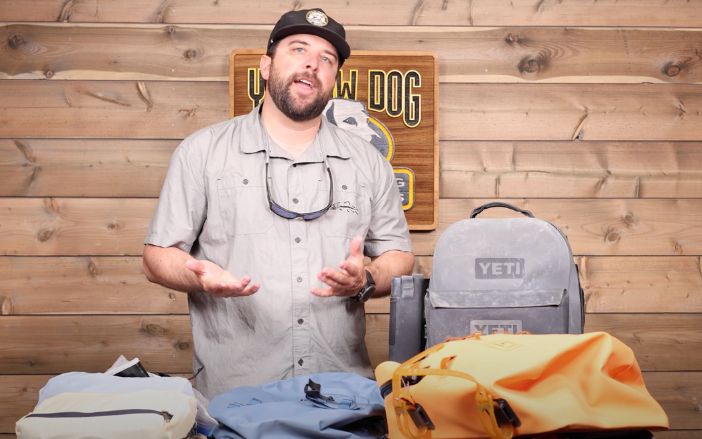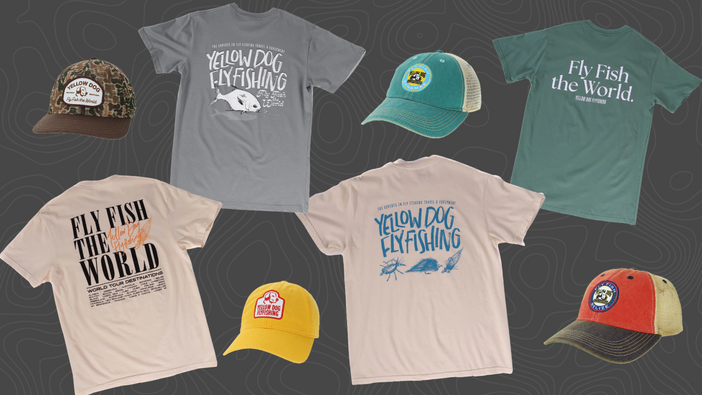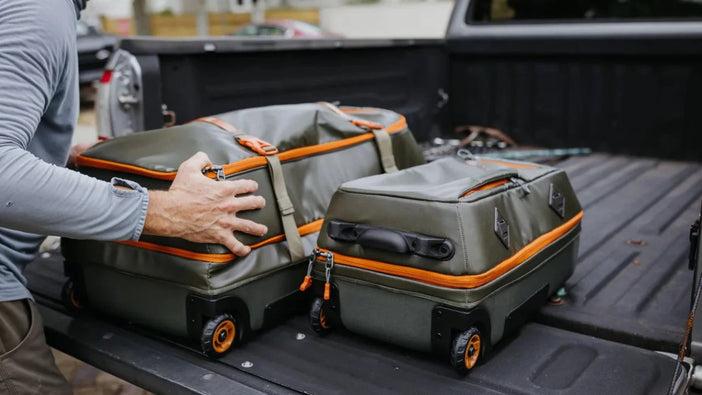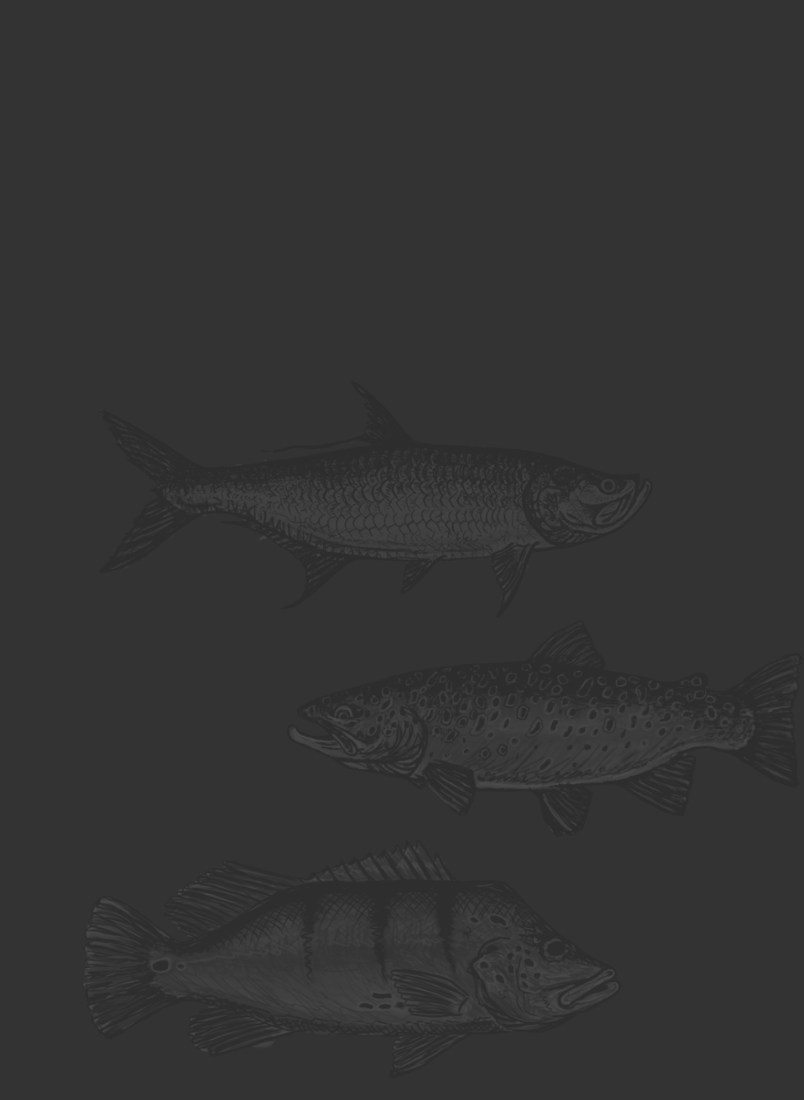Recognized as one of the finest saltwater fly fishing destinations in the world, the flats and various atolls of the Seychelles collectively offer endless wade fishing, access to an incredible diversity of species, and amazing shallow-water opportunities. When you take into account the number of species that are found throughout the waters of the Seychelles and combine this with the seclusion, lack of pressure, and the overall action, this is arguably the most incredible flats destination in the world.
Anglers can target bonefish in extraordinary numbers throughout these area waters, several different types of trevally (including the legendary giant trevally), milkfish, triggerfish, bumphead parrotfish, permit, and dozens of other reef and flats species. Over the years, more than 60 different species have been caught on the fly throughout the waters of the Seychelles.
We recently had the chance to sit down with Alex Gerbec, the head guide for Alphonse Fishing Company, to talk about some of the different species that can be caught on the fly throughout the Seychelles.
Bonefish
"By far, the most abundant game fish found throughout the Seychelles are bonefish, a species known for their strength, unmatched speed, and their willingness to take a fly," said Gerbec. "With near-perfect aerodynamic profiles, when hooked, these fish will move with power often taking numerous long runs from the angler during a fight.”

“They aren't always easy to spot when scanning the water off your skiff,” said Gerbec. “Anglers will want to look for a cluster of tails that break the water surface and nervous, "rippling" water, or moving shadows. Most bonefish throughout this region average 4 to 8-pound fish are routinely caught throughout the season. One can usually find bonefish on shallow flats, where they actively feed on crabs, mollusks, shrimp, worms and other small creatures. Always be ready for a rapid presentation, as a bonefish can materialize out of nowhere."
Trevally
"Trevally are aggressive hunters and spend most of their day looking for food while cruising the open flats on high tides, channels during mid-tides, drop-offs, and reef edges on the low tides and the first movement of the tidal push,” said Gerbec. “The most common and desirable trevally sought by visiting anglers are the Giant Trevally that can reach sizes upwards of 150 pounds!

Bringing their strong, fierce aggression towards everything they eat, catching one on a fly rod, according to Gerbec, is a chaotic endeavor. “This is a species where you will be testing your equipment to the max, especially your drag system,” said Gerbec. “They are not an acrobatic fish, so expect them to bull rush towards corral sections. Get ready for the fight of your life! Other species of trevally in the Seychelles include Bluefin Trevally, Golden Trevally, the Yellow Dot Trevally, Yellow Spot Trevally, the Big Eye Trevally as well as different smaller versions of the trevally family. Their ability to close in on a fly with tremendous speed is impressive, and the strike of even a modest-sized GT is enough to keep you coming back for more."

Milkfish
"While being somewhat rare to catch on a fly, milkfish have become increasingly sought after by anglers, particularly in the Seychelles," said Gerbec. "This silver-colored species has a large forked black tail and can grow to almost 6 feet in length. Because they don’t have teeth, this species will generally feed on invertebrates and small fish. At certain times of the year, milkfish feed on plankton near the surface and can be enticed to eat "algae-style" flies.

Milkfish are vigorous fighters, and the use of a skiff is almost always necessary to land them. A fast-action, high-quality 10 or 11-weight fly rod works best when fishing for these phenomenally powerful fish. This will allow for repetitive casting, fighting the fish aggressively, and ultimately landing them quicker. Trust that your guides will know what works, and they'll be happy to hook you up with the appropriate patterns and shots to catch one."
Triggerfish
"These bottom-dwelling fish can be found nosing prey, such as crabs and shrimp tucked into coral beds," said Gerbec. "The Seychelles has numerous types of triggerfish to target.

The Mustache Triggerfish is probably more likely to be found in the surf zone or just inside the lagoon. They reach sizes upwards of 12 pounds and feature a characteristic of a little black mustache on their upper lip. Yellow Margin triggerfish are the most prized triggerfish species visiting anglers want to catch. Their colors vary from a pinkish-orange hue to mostly yellow with black bands.”

According to Gerbec, if an angler is going for a "trigger slam", the hardest species to find and complete a slam is the Picasso Triggerfish. "Despite being very small (growing only to about 8 inches), they are easily the prettiest types of triggerfish available," said Gerbec. "Their fight is quite strong, and the use of heavier rod may sometimes be necessary."
Wrasse
"Anglers will find quite a variety of wrasse around the Seychelles. The most prized type is the Napoleon wrasse which lives deeper in the ocean and can get quite large," said Gerbec. "Occasionally, these fish will come up onto the reefs and tail around. Wrasse are some of the most beautiful fish found in the area and features intricate designs with very unique blue, purple, and emerald coloring that resemble a bump head parrotfish. In the Seychelles, we target them with a solid GT setup. These fish will generally take you into the corral if you hook them. All an angler can really do is hold on tight, crank down your drag and let them run."

Grouper
"Over ten different species of grouper can be found in the waters around the Seychelles ranging from small to quite large in size. The top three groupers sought by anglers are the Wiretail grouper, the White Splotch grouper, and the Camouflage grouper," said Gerbec. "These are definitely desirable fish to catch on a fly rod because they give a great bulldog-like fight.
Sometimes you can find them in the shallows, but primarily, they live in deeper water. Most of the time if you hook one, you won't win. They will b-line into the corral and often break you off when hooked. Regardless, they are hungry fish that want to eat. If you can get your fly in front of them, they will likely take it."

Snapper
"A wide variety of snappers can be found around the Seychelles as well," said Gerbec. "These active, schooling fish have elongated bodies, large mouths, sharp canine teeth, and blunt or forked tails. The Bohar Snapper is one of the biggest and most aggressive types that anglers will encounter on the flats.
Sometimes referred to as red bass, these fish get up to 10 pounds and have a brilliant red look to them. They gravitate toward any kind of fly cast to them ranging from shrimp to GT flies. Get ready for a fun, big fight when you hook into one."
Bumphead Parrotfish
"This unique fish is found on reefs in the Indian and Pacific Oceans and have characteristics that can only be described as resembling a strange sea creature with coloration varying from light green to pink," said Gerbec. "Adults can grow to upwards of 100 pounds and develop a bulbous forehead with a strong, crushing beak used for breaking down coral and crushing crabs. These fish will travel onto the flats in groups grazing on and around coral reefs. They are slow-growing fish that can live up to 40 years. To connect with one, patient anglers can expect to make lots of repetitive casts to get a fly in front of their face with the hope of enticing one to eat."

Yellow Lipped Emperor
"Though not as prized as other species in the Seychelles, once anglers see and catch a Yellow Lipped Emperor, they get really excited about these very aggressive fish," said Gerbec. "You can sight fish for these them in some of the skinniest turtle grass water around. Our guides use a bonefish or triggerfish set up like a little crab or something with a weed guard.
A profound attribute for emperors is the extreme color changes that happen as you catch this fish. As soon as you take them out of the water, they change to a brown camouflage color, and once returned to the water, they change back to a silvery appearance."
Indo Pacific Permit
"In the Seychelles, anglers will have opportunities to catch an Indo-Pacific permit. While they don't grow as large as the ones you will find in the Caribbean, rest assured they are just as hard to catch," said Gerbec. "They are a gorgeous fish with the same body shape characteristics of their Caribbean counterparts, but they have different coloration and only get up to 25-30 pounds at most in size. Lacking the black spot on their side like the permit in the Caribbean, the Indo-Pacific permit is goldish brown in its coloring.

Like all permit, it's a very special accomplishment to land one, and some Seychelles varieties can be golden in their coloring. ‘Holding the gold’ is a common phrase used by anglers who succeed in catching a Seychelles permit. You'll find them on the turtle grass but most predominantly on the sand bars in groups or on the tails of stingrays."
Dogtooth Tuna
"Doggies" are predominantly deep-water fish, and most likely, anglers are going to catch them while dredging – a fishing technique comprised of a very heavy sink tip fly line with a heavy fly that is stripped vertically back to the boat.
"These fish get huge," said Gerbec. "The biggest the guides in the Seychelles caught this year on conventional gear was 72 kilos (roughly 160 pounds)! Despite their name and familiar silvery-blue appearance, these fish are not tuna at all but instead are in the mackerel family. Their very predominant dog-like teeth are the main indicator of the species. Often, anglers will get a shot at them with a fly while teasing sailfish. You'll want to have a 12-weight set up at the minimum, but you would be just as happy with a 16-weight because these fish put up a tremendous fight."
Yellowfin Tuna
"With quite a few species of tuna found around the Seychelles, anglers will often run into these fish while targeting milkfish," said Gerbec. "Typically, you will see signs of these deep-water fish as they feed in groups busting on the water's surface, or you’ll see and hear extremely vocal birds flying above them as the feeding frenzy happens below.
While you can dredge for yellowfin tuna like the dogtooth tuna, it's more special if you can come upon them when they are blitzing on a school of Bonito or other baitfish because they will be the most aggressive and acrobatic. In the Seychelles, these fish grow into the 50-60 pounds range and often can be caught on the fly. Once you are in casting range, throwing a popper or a brush fly to them usually will result in a hookup. You'll want to use a 12 or 14-weight rod to fish for yellowfin tuna because they put on a lengthy and big fight."
Wahoo
"Your best shots at catching Wahoo in the Seychelles come when using a teaser setup similar to sail fishing," said Gerbec. "These fish can reach up to 40 pounds in size. Their super combative takes and stunning speed make this species very fun to catch on the fly. Most people show up and think the sailfish is the goal, but once they hook into a wahoo, they are the ones truly hooked! Wahoo are equipped with many tiny, razor-sharp teeth to shred prey and will require the use of a wireline. When you go tight on one, expect them to run and jump all over the place. It's just nuts to watch and so much fun catch."
Barracuda
"The barracuda might be the most destructive hunters that lurk around the Seychelles. These fish eat everything, even GTs, and sharks," said Gerbec. "They are crocodile-like, and often these predatory fish can grow to 5-6ft in size. They are long silver-colored fish with blackish gray patterning on their sides.
Their most notable trait is their big mouths, big teeth, and very mean temperament. These fish are capable of sitting very still in the water, and you won't see them until they strike. Often times anglers will make a cast to another species, make a strip or two, then suddenly, out of nowhere, a barracuda quickly moves in and bites the smaller fish in half. Their over-the-top aggression makes this species really fun to catch on the fly, but it takes more enticing than you would think to hook one. Sometimes they can be the hardest fish to catch on a fly rod. When you do entice one to eat, they will jump like crazy. Usually, you are fishing a GT setup when you hook into a barracuda, and quite often, they will bite you off. They are a very strong fish that is an absolute thrill to catch."
Sailfish
"Predominantly found out in the deep water very close to the lagoon, sailfish are an awesome species to catch on the fly," said Gerbec. "The best part is that you won't have to travel more than 5 minutes outside the lagoons to get into their blue water habitat. Guides will tease them up from the deep by skipping a hook-less lure, also called a "teaser" behind the boat.

Once the fish are in sight and still hot, your guide will shut off the boat, bring in the teasers, and anglers can pop a fly into the water. When hooked, sailfish jump wildly. A lot of flats fishermen come to the Seychelles and haven't even considered going after sailfish. Once they go and catch one, suddenly they can't get enough. While they average in the 50-60 pounds range, these fish grow long, have big features such as their big sail dorsal fin, and put on quite a show running and blasting out of the water."
+ View the Seychelles Fly Fishing Gear Guide: Everything You Need
Related Articles:
- The Best Bonefishing Destinations in the World
- Guide Talk: How to Come Prepared for a Seychelles Fishing Trip
- An In-Depth Guide to Fly Fishing for Giant Trevally
- Seychelles: Outstanding and Remote Saltwater Fly Fishing Atolls
- Coming Prepared with the Right Saltwater Flats Clothing
- Jako Lucas: 6 Full-Proof Tactics for Fly Fishing For Milkfish



























